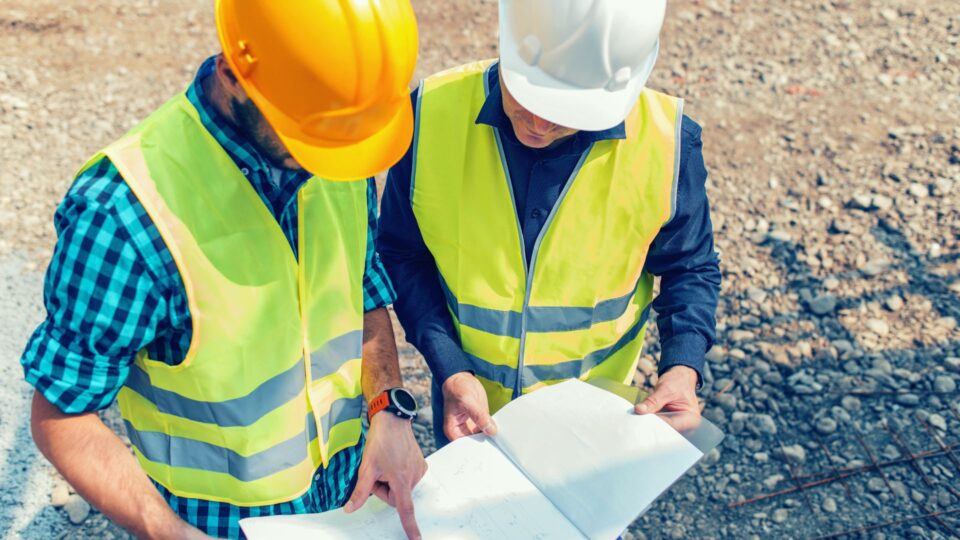Construction companies must prioritise HSE compliance and mitigate workplace hazards to eliminate workplace fatalities. Which are the most significant occupational hazards in the construction industry, and what are the best solutions to minimise them?
Between 2021 and 2022, there were 24 fatalities in the Australian construction industry. This figure highlights the necessity of health and safety compliance in the construction industry.
Read on to learn how to improve construction worker safety and what the most prominent hazards are.
What are the significant safety hazards in the construction industry?
To help you understand the breadth of health and safety obligations in the construction industry, here are some examples of significant safety hazards in the construction industry.
Occupational lung damage
There are a plethora of airborne hazards that can affect worker health in construction by causing occupational lung damage.
Dust, mildew, asbestos, and other airborne pollutants can all contribute to developing serious respiratory conditions.
According to the Australian Institute of Health and Safety, more than 10,000 Australians will develop lung cancer, and up to 103,000 workers will be diagnosed with silicosis due to their current exposure to silica dust.
The spike in this disease is attributed to the increasing popularity of engineered stone worktops. Around 350 construction workers have reported suffering from silicosis due to this occupational hazard.
To mitigate airborne hazards, PPE equipment and proper ventilation should be prioritised on construction sites.
Body stressing
Around 37% of reported occupational injuries in the construction industry were attributed to bodily strain and repeated stress. Using heavy-duty tools and equipment and repeated lifting can all cause long-term damage to the body.
In addition to these, hazards, however, is the potential for heat and cold stress to affect the body. Workers can develop serious health complications such as hypothermia and frostbite when exposed to cold temperatures for long periods. Additionally, working in extreme heat can cause dehydration, fainting, and falls.
To reduce body stress in the construction industry, there should be a focus on delegating heavy lifting to machines and implementing heating and cooling solutions to ensure optimal working temperatures.
Electrical hazards
According to the Electrical Regulatory Authorities Council, nine electrical deaths were from eight incidents in Australia throughout 2022. Electrical equipment should be inspected regularly to spot potential hazards, and the proper precautionary measures should be taken to ensure voltage regulation.
How to mitigate occupational hazards in the construction industry?
To reduce the potential for on-site injuries and fatalities, you can implement the health and safety procedures listed below.
Improving air quality
You can implement ventilation and extraction equipment to improve air quality on-site, removing pollutants, dust, and dangerous materials from the air. Here are the top recommendations for improving air quality:
- Mobile fume extractor – this extractor improves air quality by removing airborne hazards such as volatile organic compounds and particulate matter, which construction processes like welding can emit. You should install this equipment near material handling areas to capture dust and pollutants.
- Vertical discharge roof fan – this solution expels air, dust, and contaminants from enclosed spaces. It is typically installed into a roofing structure to provide a vertical airflow for air circulation. It reduces air pockets and removes moisture and contaminants for improved air quality.
Choosing the most suitable solution for your construction site can be challenging, so speaking to a ventilation expert can help. At Fanquip, a team of ventilation experts can assess your site conditions and recommend the most optimal ventilation solution.

Providing temperature regulation
Temperature regulation ensures workers do not overheat or suffer from cold stress. Here are some solutions to assist with temperature regulation for your construction site:
- Mancoolers – man coolers regulate the temperature of on-site machinery and working conditions by providing a high velocity of cool air. Man coolers are most beneficial in areas with high heat exposure, such as welding stations and hot work areas. This is a valuable tool for preventing heat stress and promoting productivity.
- Heat fans – during the colder months, you can use a heat fan to combat cold stress. This equipment is most beneficial when placed in outdoor work areas or unheated structures. The heat fan has a heat-conductive component to provide warm air. The adjustable temperature and safety killswitch ensure industry compliance.

Summary
Managing occupational hazards in the construction industry is a significant undertaking. By managing air quality and temperature, you can ensure working conditions promote productivity and reduce the potential for occupational lung illnesses.
At Fanquip, we provide clean air solutions to the construction sector. We can assess your site’s specifications and recommend extraction and temperature control solutions to ensure occupational safety. Contact our team of ventilation experts to learn more.
